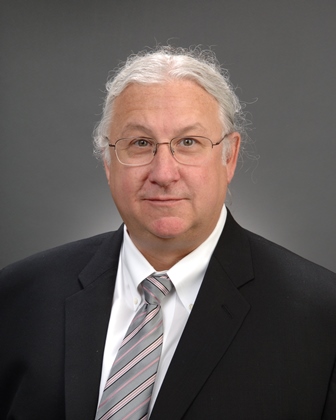Last month, Electronic Products asked a number of executives about the effects of the imposition of cuts imposed by the Budget Control Act of 2011, more commonly refered to as the Sequester, were having on the Military/Aerospace business. We also asked about a number of technology issues, such as communications improvements, counterfeiting, remotely piloted vs drone aircraft, and more. We found the answer to be enlightening.
Electronic Products: What impact is the Sequester having on your Military/Aerospace business? Since it is currently slated to remain in place for ten years, what effect do you anticipated it could have if it continued?
Amr El-Ashmawi, Worldwide Vice President of Strategic Marketing, Microsemi: In defense, we are winning higher-value engagements and executing on our total solution approach so we have more content per platform. Electronic content is growing about 4% in the U.S. and 7% worldwide and we have been very successful in identifying programs early and teaming up with customers.

For us, Sequestration has actually turned out to be a benefit. We're using the same total system approach in aerospace, which for Microsemi encompasses space and commercial aviation, and we see strengthening in these end markets.
Doug Carlson, Director of Strategy – Aerospace & Defense, MACOM Technologies: MACOM's Aerospace and Defense (A&D) business has experienced little impact from the Sequester. Our business is well balanced between domestic and international sales, lowering our overall exposure. In addition, our domestic A&D business is broadly diversified among numerous programs, thus we do not experience significant, single-program-related disruptions. We believe that the RF Market in A&D will remain strong.

As the Sequester moves forward we believe that there will be several dynamics coming into play, such as a shift from new systems to system upgrades, and an increase in RF content in communications, data links, and sensing as the force relies on information dominance to supplement lower total troop numbers
Jerrold M. Hornstein, Director of Business Development, Mil/Aero, Astrodyne: We have seen the cancellation of immature programs, a significant re-scheduling of moderately mature programs, and a re-programing of dollars for previously fully funded mature programs in order to preserve funding for daily operational costs.

In the short term, companies will turn to internal R&D funding for new technology development which they perceive has a future market awaiting a funding reconciliation. Over the long term as internal funding dries up, we will see significant downsizing within Mil/Aero companies.
Electronic Products: What significant changes have occurred in your business during the last year, what changes do you see happening in the coming year.
Carlson: Sequestration and the general economic climate are putting financial pressure on the defense market. System affordability has moved from “words on a page” to a reality in production. We have found that, with our Dual Use manufacturing strategy, we are able to provide defense OEMs with high-performance, cost-effective solutions to their critical RF problems.
Hornstein: We have begun, and will continue to be, more selective, and retarget our efforts towards those portions of the Mil/Aero marketplace which we perceive as having a more stable future.
Amr El-Ashmawi: We do not see anything significant, other than an increasingly proactive approach focusing on programs/missions that are critical to the long-term needs of the warfighter.
Electronic Products: What are the most important technology changes you've seen in the last year? What is their impact?
El-Ashmawi: Cyber security is an evolving area as well as mobility. Technology is being developed to support these types of applications as well as securing them from attacks. Also, many platforms are going through tech refreshes as well as utilizing common technology (reuse).
Carlson: The emergence of GaN from R&D into real systems is the single largest technology dislocation in our industry. GaN has a profound impact on performance, size, and weight across numerous RF functions, allowing system level solutions which could not be achieved in the past. GaN's impact is significant across all major defense market segments: radar, communications, electronic warfare, and munitions.
Electronic Products: How are the latest technologies helping the military ensure secure communications?
El-Ashmawi: Information assurance is critical to the securing the DoD network for infrastructure and on the tactical battlefield. The USG is leveraging COTS solutions in a redundant manner to allow for the latest and greatest commercial technology to be used. Where security is critical, the continued of USG based IA will continue to be used but at levels easily implemented for SWaP.
Carlson: GaN enables broadband communications unlike any previous technology. When this capability is coupled with frequency agility, smart self-healing networks, new waveforms, and more sophisticated EW approaches, systems are able to communicate higher data rate to the edge, securely allowing soldiers to make decisions with unprecedented levels of information.
Electronic Products: Have counterfeit parts been a problem for your company? What technologies do you see as being able to overcome the problems?
El-Ashmawi: Microsemi has proactively invested in assuring its technology is not vulnerable to counterfeiting by implementing unique ID and working with the supply chain channel to assure proper sourcing of our technology and collaborate with our customers to promote proposer methods for procurement of our products.
Carlson: MACOM has not experienced this as an issue either as a supplier for RF components or as a user in creating high level solutions.
Hornstein: As with all well run companies, Astrodyne is ever vigilant in working in concert with its suppliers to take those actions necessary to insure the integrity of its component base.
The addition of AS9100's component traceability and similar procedures to our ISO 9001:2008 and 13485 processes will better enable us to help insure the reliability of our parts inventory.
Electronic Products: There are remotely piloted aircraft, and then there are self-guided aircraft. Are both of these aircraft advancing at the same pace, technologically speaking?
El-Ashmawi: Yes and no. Self-guided aircraft are more focused on small-form-factor platforms but incorporate ISR technology, versus piloted-guided aircraft, which offer high levels of performance, size, and larger sensor suites.
Carlson: There has been a significant proliferation of remotely guided aircraft which drive major advances in communications and data transmission. As these aircraft move from remotely guided to self-guided, the critical technology developments are around the sensors and processing capability for autonomy and “sense and avoid” – this drives a requirement for high resolution, low-cost radar technologies.
Electronic Products: What technical improvements will be needed in the coming year to help meet the goals of your major customers' programs?
El-Ashmawi: Ease of use, productivity, cost, and the latest technology.
Carlson: The market drives for continuous improvements in the size, weight, power consumption, cost and functionality of systems leading to greater demands on power density, bandwidth, efficiency, operating voltage, and so forth. These attributes will be combined with elements of adaptability and agility, driving new generations of passive components to create a full solution.
Advertisement
Learn more about AstrodyneM/A-COM Technology SolutionsMicrosemi





